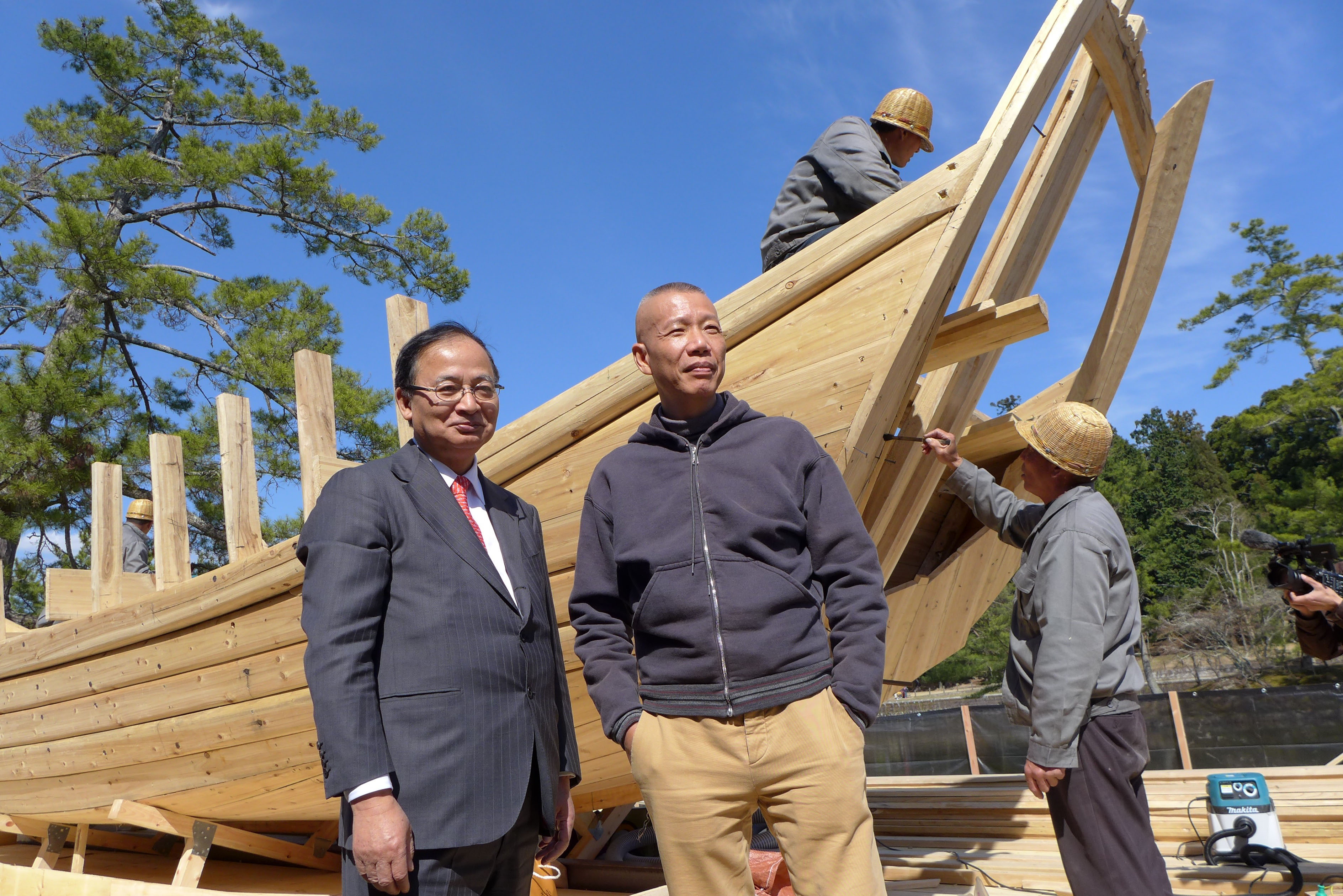"When I visited Todaiji Temple in Nara, just after I arrived as a Chinese student in Japan about 30 years ago, I felt somehow nostalgic as it had an atmosphere of old China," says Cai Guo-Qiang, as he explains his work for Culture City of East Asia 2016, Nara, a cultural project that launched in March. "I think that Todaiji is a symbol of cultural exchange between Japan and China, which crossed over the ocean by ships, bringing Buddhism, technology and culture as well as goods such as silk or ceramics. That's why I wanted to build a ship here to remind us of our close relationship in ancient time."
Todaiji Temple has quite a history. It is well known for its Birushana Daibutsu (Great Buddha) statue, a national treasure that was originally built in the mid-8th century as a prayer monument to peace and prosperity. It was a symbol of the power of Buddhism and its stabilizing influence on the nation as it was being formed by the adoption of Chinese culture during the Nara Period (710-794). As the capital of Japan at that time, Nara was being modeled after the Chinese city of Chang'an (present-day Xian). "To Build a Ship," the work of Cai, an international Chinese artist based in New York, is currently being exhibited in Todaiji's Kagami-ike pond, which the artist explains is a metaphor of what he calls the "sea of East Asia."
Based on traditional-style ships that once traveled across those waters, Cai's work was publicly built at Todaiji in March by 10 shipbuilders from China and is the Nara symbol of the Culture City of East Asia project, which promotes cultural ties between Japan, China and South Korea at different host cities in each of those countries every year.



